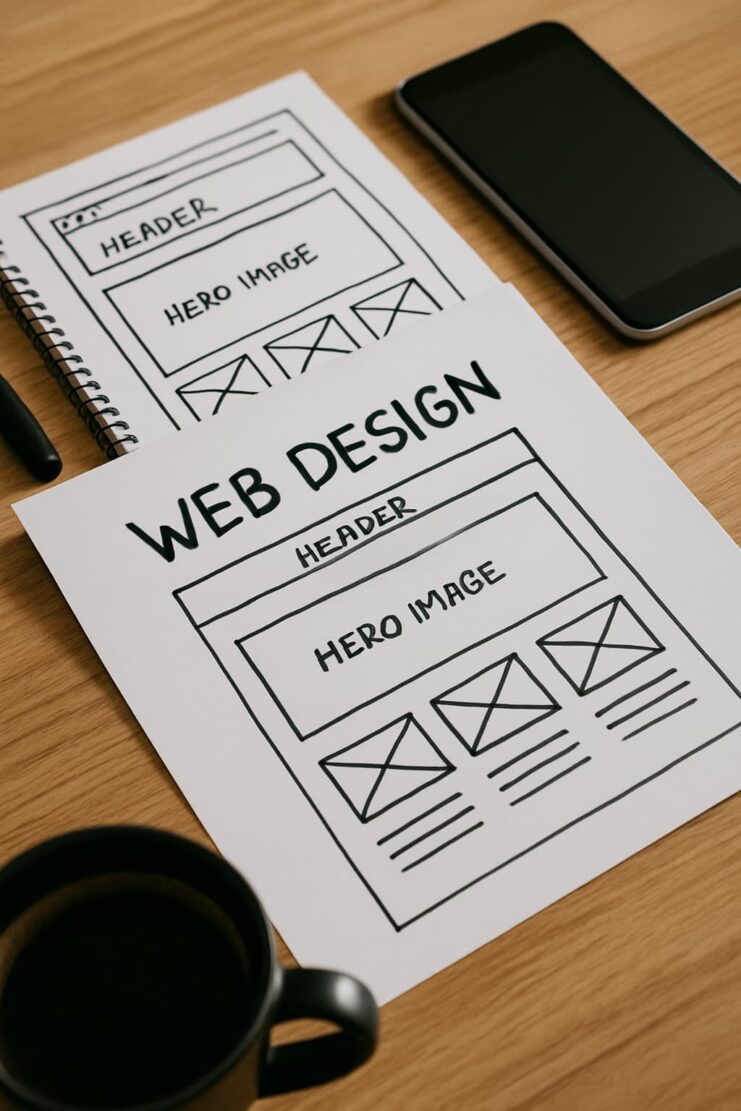A lot of people try to build their own site. They start with a template, pick something that looks decent, install the theme, and try to customize it. Two hours in, nothing looks right. The fonts are wrong. The layout breaks when resized. The images load slowly. There are too many settings and none of them do what you expect. That’s when people close the laptop and start looking for someone who actually knows what they’re doing. Not because they failed. But because they realized they don’t want a website that eats up their time and energy. They want something that works. Not in theory, but in daily use. That’s why they turn to web studios.
Templates Don’t Match Real Work
Templates are built for general use. They’re made to look impressive in demos and adapt to almost anything. But real people don’t need infinite combinations. They need a site that matches what they do without compromise. Most templates force content to fit a layout. Not the other way around. You have to rewrite your message so it fits in their hero block. You have to crop your images to match their gallery structure. You have to use their button styles, even if they don’t match your tone.

You have to live with animations that don’t belong to your type of work. The result is always the same. It feels off. People notice when something looks like a stock setup. They feel it when a site is bloated or inconsistent. They might not know the reason, but they trust the site less. This is where web studios come in. They don’t offer options. They offer decisions. One layout, one tone, one structure built around your actual content. It fits because it’s made for what you do. Not for what someone else imagined ten years ago.
Most Clients Just Want Something That’s Done
Web studios don’t sell design. They sell resolution. Most clients don’t want branding sessions, positioning workshops, or content strategy decks. They just want to stop thinking about their website. They want to send someone a link and feel okay about it. They want to stop apologizing for their homepage. They want to stop wondering if the mobile version is broken. They don’t want animations.
They don’t want dark mode. They want a homepage, a page about what they offer, and a way to be contacted. That’s it. Not because they lack vision. But because they don’t need more than that. When they ask for something minimal, they mean quiet. When they say simple, they mean functional. When they say clean, they mean don’t make it harder than it has to be. A studio delivers that. Not a platform, not a builder. A team or a person who listens, builds what matters, and deletes what doesn’t.

People Don’t Want To Update Their Website Every Month
A big reason clients come to studios is because they want a site that doesn’t change every time the software updates. They’ve been through it. A platform redesigns the backend, and now their content is misaligned. A plugin stops working. The whole thing breaks on tablets. Or worse: they log in six months later and can’t even remember how to edit a section. This creates dependency.
You either have to relearn the system every time, or give up. A good studio makes something permanent. The code is clean. The layout is stable. If they want to change the hours or the text, they email someone. Or they use a simple CMS that doesn’t require a manual. Most people running a business or offering a service don’t want to be developers. They just want the site to work without their involvement. That’s not laziness. That’s focus. A studio gives them that peace of mind. It removes the background noise of tech updates and shifting interfaces.
Real Clients Don’t Want To Perform Online
A lot of modern web design assumes that every client wants to build a brand. To stand out. To make content. To tell their story. But many people offering real services don’t want to talk about themselves at all. They just want the site to say clearly what they do and how to get in touch. They don’t want a blog. They don’t want video.
They don’t want a tone of voice workshop. They just want something that doesn’t embarrass them. Something that matches their tone. Something that looks like they care, but doesn’t scream for attention. A studio gets that. It doesn’t try to turn them into something they’re not. It takes what’s already there and makes it usable. That’s what most people really want. They don’t want to be exciting. They want to be understood.
Conclusion
People come to a web studio when they’re tired of options. When they’ve seen too many tools and not enough results. When they’ve tried to fix it themselves and realized that every hour spent messing with a site is an hour not spent doing their actual work. A studio offers relief. It builds a site that is light, stable, quiet, usable, and specific. It removes guesswork. It avoids trends. It doesn’t push the client to be something they’re not. It just gives them a place online that makes sense and stays out of the way. And that’s exactly what they were looking for.